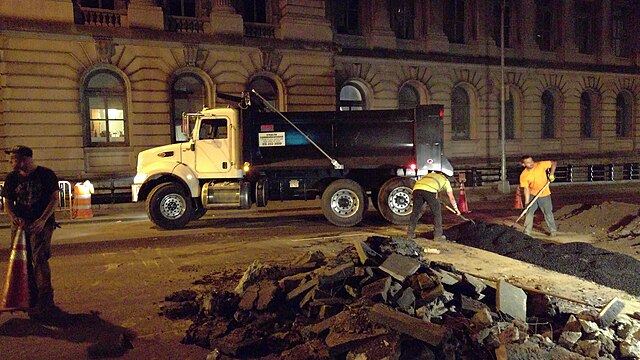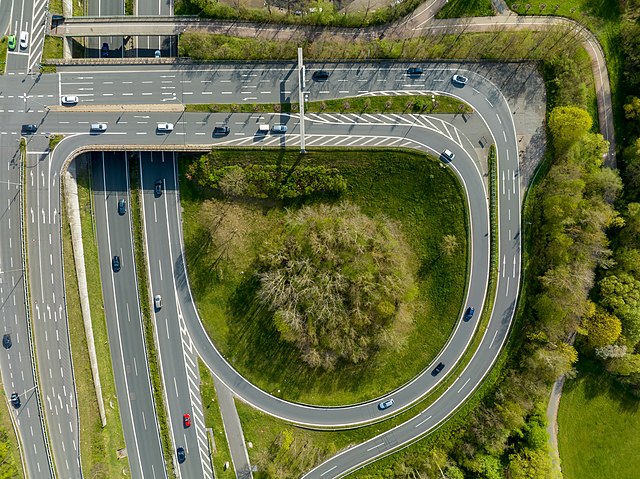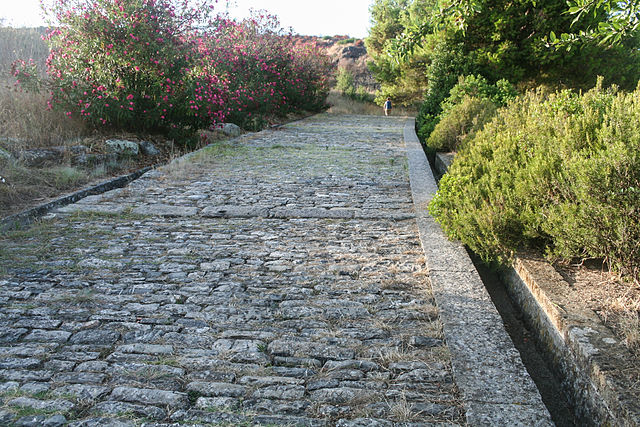A road surface or pavement is the durable surface material laid down on an area intended to sustain vehicular or foot traffic, such as a road or walkway. In the past, gravel road surfaces, macadam, hoggin, cobblestone and granite setts were extensively used, but these have mostly been replaced by asphalt or concrete laid on a compacted base course. Asphalt mixtures have been used in pavement construction since the beginning of the 20th century and are of two types: metalled (hard-surfaced) and unmetalled roads. Metalled roadways are made to sustain vehicular load and so are usually made on frequently used roads. Unmetalled roads, also known as gravel roads or dirt roads, are rough and can sustain less weight. Road surfaces are frequently marked to guide traffic.
A road being resurfaced using a road roller
Red surfacing for a bicycle lane in the Netherlands
Construction crew laying down asphalt over fiber-optic trench, in New York City
Old Roman road, leading from Jerusalem to Beit Gubrin, adjacent to regional highway 375 in Israel
A road is a thoroughfare for the conveyance of traffic that mostly has an improved surface for use by vehicles and pedestrians. Unlike streets, whose primary function is to serve as public spaces, the main function of roads is transportation.
Bundesautobahn 73 and its slip road leading to Erlangen
The Porta Rosa, a Greek street dating from the 3rd to 4th century BC in Velia, with a paved surface and gutters
A paved Roman road in Pompeii
Part of the AVUS road in Berlin, the first automobile-only road, which served as an inspiration for Piero Puricelli's 1924 autostrada between Milan and the northern Italian lakes, the first motorway in the world.








